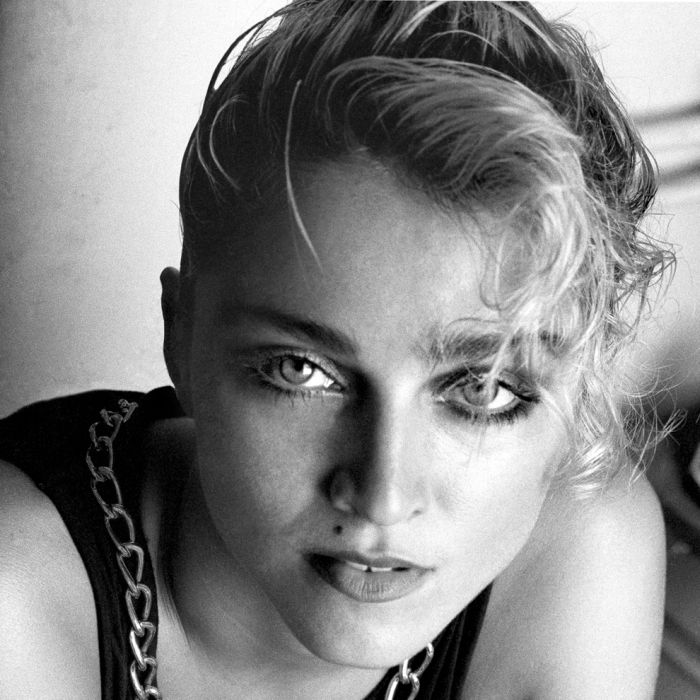|
|
Madonna Louise Ciccone
|
Music videos and performances
In The Madonna Companion, biographers Allen Metz and Carol Benson noted that more than any other recent pop artist, Madonna had used MTV and music videos to establish her popularity and enhance her recorded work. According to them, many her songs have the imagery the music video in strong context, while referring to the music. The media and public reaction towards her most-discussed songs such as "Papa Don't Preach", "Like a Prayer" or "Justify My Love" had to do with the music videos created to promote the song and their impact, rather than the song itself. Morton felt that "artistically, Madonna's songwriting is ten overshadowed by her striking pop videos." Madonna's initial music videos reflected her American and Hispanic mixed street style combined with a flamboyant glamor. She was able to transmit her avant-garde downtown New York fashion sense to the American audience. The imagery and incorporation Hispanic culture and Catholic symbolism continued with the music videos from the True Blue era. Author Douglas Kellner noted, "such 'multiculturalism' and her culturally transgressive moves turned out to be highly successful moves that endeared her to large and varied youth audiences". Madonna's Spanish look in the videos became the fashion trend that time, in the form boleros and layered skirts, accessorizing with rosary beads and a crucifix as in the video "La Isla Bonita". Academics noted that with her videos, Madonna was subtly reversing the usual role male as the dominant sex. This symbolism and imagery was probably the most prevalent in the music video for "Like a Prayer". The video included scenes an African-American church choir, Madonna attracted to a statue a black saint, and singing in front burning crosses. This mix the sacred and the prane upset the Vatican and resulted in the Pepsi commercial withdrawal. Madonna has been honored with record-breaking 20 MTV Video Music Awards, including the lifetime achievement "Video Vanguard Award" in 1986 for her contributions to the world music video.
Madonna's emergence occurred during the advent MTV, and, according to Chris Nelson from The New York Times, "with its almost exclusively lip-synced videos, ushered in an era in which average music fans might happily spend hours a day, every day, watching singers just mouth the words." The symbiotic relationship between the music video and lip-syncing led to a desire for the spectacle and imagery the music video to be transferred to live stage shows. Chris Nelson The New York Times reported, "Artists like Madonna and Janet Jackson set new standards for showmanship, with concerts that included not only elaborate costumes and precision-timed pyrotechnics but also highly athletic dancing. These effects came at the expense live singing." Thor Christensen the Dallas Morning News commented that while Madonna earned a reputation for lip-syncing during her 1990 Blond Ambition World Tour, she has subsequently reorganized her performances by "staying mostly still during her toughest singing parts and leaves the dance routines to her backup troupe ... rather than try to croon and dance up a storm at the same time." To allow for greater movement while dancing and singing, she was one the earliest adopters hands-free radio-frequency headset microphones, with the headset fastened over the ears or the top the head, and the microphone capsule on a boom arm that extended to the mouth. Because her prominent usage, the microphone design came to be known as the "Madonna mic".
|
|









